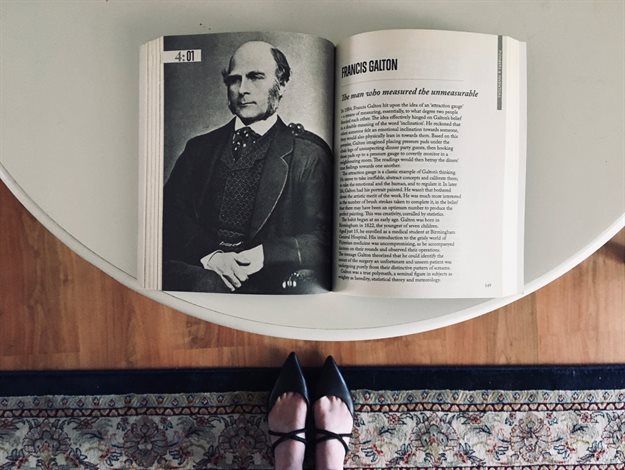Automated customer relationships vs real human connection
Only connect
The Odditorium by David Bramwell and Jo Keeling is an utterly delightful book. It covers the stories of the “tricksters, eccentrics, deviants and inventors whose obsessions changed the world". In other words, it is filled with the sort of weird and wonderful, arbitrary general knowledge my career as a futurist and trend analyst is based on.

The attraction gauge
The one story in particular that caught my eye is the chapter on Francis Galton, an eccentric - and prolific - inventor and keen life-long student of life, the universe and everything. Galton is perhaps best known for his pioneering work in developing the fingerprinting techniques as a forensic science that are still used by investigators today. As important as that work is, my favourite Galton invention has to be his idea of an “attraction gauge” to measure the “to what degree two people fancied each other” by analysing how far people leaned in towards each other while talking.
The attraction gauge is fascinating to me because Galton came up with this idea in 1884. This reminds us of two things. Firstly, on a personal level, understanding human connection (and attraction) is an ongoing obsession of our species (as it should be, after all, without such connections, we would go extinct). Secondly, on a commercial level, human connection - that is interpersonal relationships - is where our business and brand margins lie.
This second point is especially important in the age of autonomous commerce and unconscious consumerism. As our business and consumption choices tend towards more automation, the efficiencies of automation need to be weighed up against the business risks. Specifically, whatever can be automated can be replicated and undercut by a competitor. What cannot be replaced and automated, however, is real relationships, with human beings in your supply chain and brand love and goodwill with your customers.
Everything changes but everything
As my good friend John Sills writes in his article Everything changes but... everything, when it comes to understanding what your customers want and how to connect with them in a real way that cannot be replicated with a piece of code, nothing has changed very much over time.
Whilst the technology to access these services may change, the core needs to customers remain broadly the same. Airlines – get me there safely and on time. Banks – keep my money safe and secure. Restaurants – give me food that tastes good. These are all industries that have played around endlessly with how to deliver their products to customers, with some brilliant innovations. But ultimately, unless those core needs are met, everything else is insignificant. ~ John SillsYour customers still want good service, they still want to feel valued and heard, they still want you to keep your promises and meet their needs when and where you committed to do so. Basic stuff. Kindness, politeness, friendliness and respect - showing your customers you care about more than just getting their money out of their bank and into your own.
It’s not about the technology, it’s about the connection. So, how far are you leaning in to your customers?
About Bronwyn Williams
- #PulpNonFiction: Local books worth reading and gifting this holiday - 20 Dec 2021
- #PulpNonFiction: In search of utopia - 13 Dec 2021
- #PulpNonFiction: Free Britney and other true conspiracies - 6 Dec 2021
- #PulpNonFiction: On the contrary - 29 Nov 2021
- #PulpNonFiction: The tail of Pan narrans - 22 Nov 2021
View my profile and articles...
